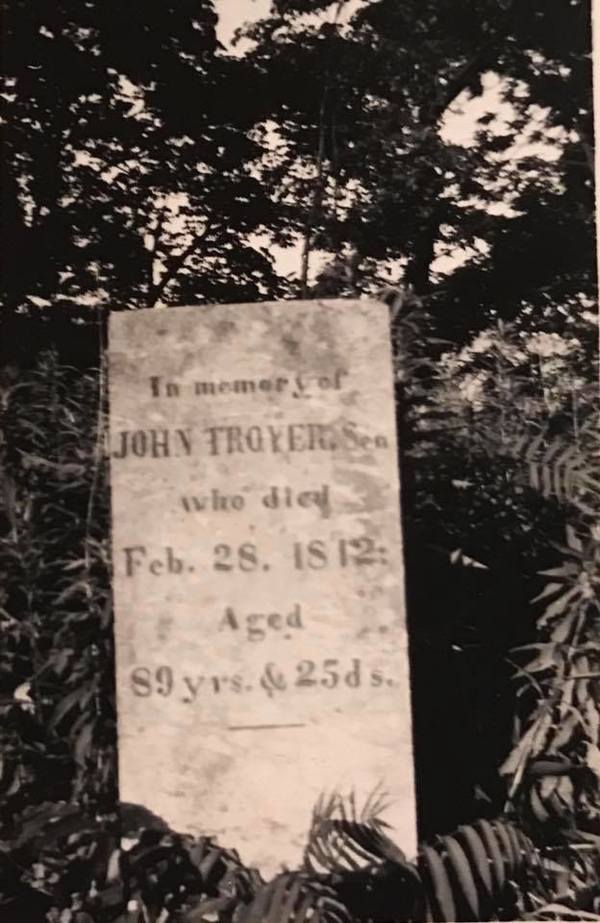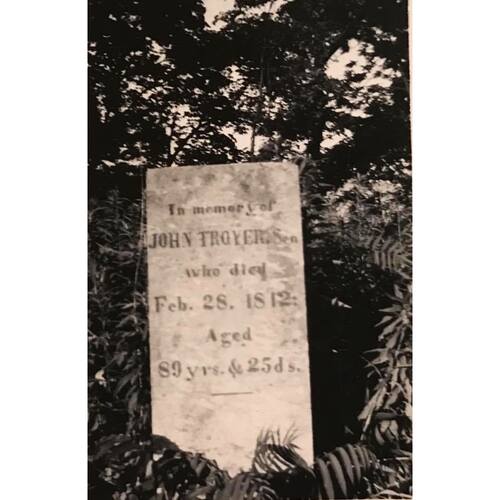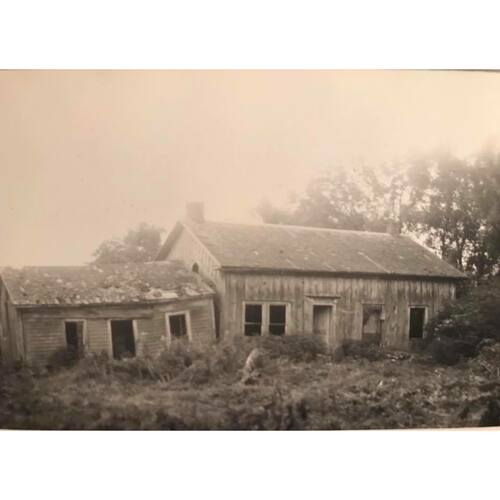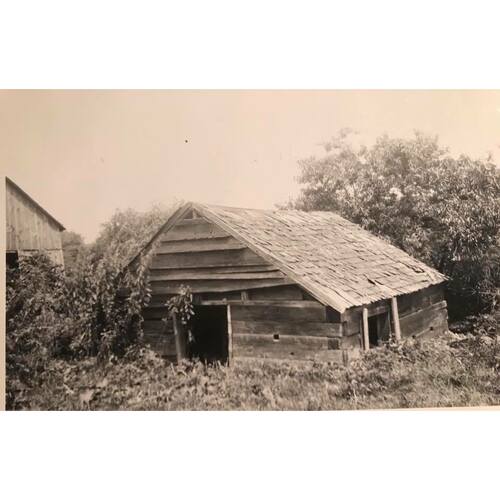
Source: Link
TROYER, JOHN, farmer, businessman, medical practitioner, and exorcist; b. 3 Feb. 1753 in Brothers Valley, Somerset County, Pa, eldest son of David Michael Troyer and Magdalena Mast; m. Sophrona —; d. 28 Feb. 1842 near Port Rowan, Upper Canada.
Of Rhineland ancestry and Tunker faith, John Troyer emigrated from Pennsylvania in 1789 with his wife, daughter, and son Michael. He later claimed to have “Suffered much by the Rebellious Americans, as they made no scruple to take all he had; and he came . . . to this Province in Order once more to enjoy Peace under His Majestys Good Laws.” Troyer settled near Long Point on Lake Erie on a farm which is still known as Troyer’s Flats. By 1797 he had a gristmill and a smithy, and he was in the process of building a 38-ton sloop, which he put up for sale the next year. Troyer, or Dr Troyer as he was usually called, was a figure well known in the area for his medical skills. Lacking any formal training, he practised blood-letting and gained fame for his herbal remedies.
Troyer‘s renown derives not from his exploits as an early settler but from his pre-eminence in the folklore of the region. Amelia Harris [Ryerse*], a former resident of Long Point, described him in her reminiscences as “a fine looking old man with a long flowing Beard. . . . He possessed a thorough knowledge of witches, their ways and doings, and the art of expelling them, and also the use of the Divining Rod with which he could not only find water, but could tell how far below the surface precious metals were concealed.” Local tradition has it that Dr Troyer and his son would have discovered a famous treasure on the farm if, in their searching activities, their digging had not disturbed a phantom guardian of the treasure, a huge black dog who leapt out at them and drove them away. Also, a mischievous neighbour, Mrs Jennie Elizabeth McMichael, is said to have often teased Troyer with witchlike behaviour; she could always stop him from going on a hunting expedition – his marksmanship was famous – by laughing at him from behind bushes and then mysteriously crossing his path. Safely back in his house, Dr Troyer no doubt took comfort in the protective hex signs with which he surrounded himself as well as a witch trap that he set every night beside his bed. Even so, this trap had been no help when, as he averred, witches entered his bedroom one night, turned him into a horse, and rode him through the air across Lake Erie.
At Baldoon in the St Clair River country, and towards the end of 1829, the supreme test of Dr Troyer’s skills in white magic began to develop. A certain farmer and fisherman, John T. McDonald, living on the banks of the Snye Carty, had built his house on a controversial site. Bauzhi-geezhig-waeshikum, the chief and medicine man at Walpole Island (Lambton County), claimed that McDonald had cut down a poplar grove haunted by a group of mamagwesewug (fairies), and so incurred mysterious and terrifying attacks on his house and farm; others maintained that McDonald‘s troubles began when he did not recognize the claims of an old woman who lived near by in the “long, low house.” Some 20th-century commentators say that what happened in McDonald’s house owed its occurrence to the presence in his family of a young orphan girl subject to seizures by a poltergeist. For three years, bullets with no apparent source whizzed through windows; other unexplained events took place – mysterious tramping sounds at night, the sudden and capricious levitation of heavy stones, dishes, firelogs, ladles, guns, and the house itself. Fires began to break out, a phantom dog appeared, domestic animals sickened and died, and crops failed.
Since no one in the Baldoon settlement seemed to be of any help, a Methodist minister advised McDonald to seek the aid of Dr Troyer. Both men made the journey to Long Point and when they stopped by the Thames River at night they were attacked by witches and other evil spirits whose cryings made rest impossible. At Long Point, Dr Troyer’s daughter retired with her father’s scrying stone which she consulted for long hours beneath his hat; both objects were famous for their powers of clairvoyant assistance. Exhausted by her experiences during her trance, she surprised McDonald by her minute knowledge of his predicament and his locale. She told him to make a silver bullet and shoot a strange goose that had lately wandered onto his property; on one of the bird’s wings were some strange, black feathers. Back at Baldoon, McDonald followed her advice; when shot in the wing, the goose disappeared among the rushes to re-emerge in the “long, low house” as the old woman McDonald had quarrelled with, her arm newly broken. From that day on, the sufferings of the McDonald family ceased.
Although Dr Troyer’s gentle and extraordinary personality never stopped attracting either strange events or their reportage, nothing else about his life is quite as memorable as his assistance in solving the Baldoon mystery. But almost as striking are the stories about his last days; just before his death he shot “a hawk, off-hand, from the peak of the barn roof.” Thieves, it was reputed, came to rob his grave of magic talismans buried there; a great white bird drove them off. Despite the folkloric haze with which his figure is surrounded, perhaps we should not forget that John Troyer not only gave the Long Point marsh country its most legendary father figure but was the person who planted the first garden and the first orchard in Norfolk County and possessed its first medicine chest.
Dr Troyer and the folklore surrounding him have found their way into Canadian theatre history in three short plays by Hilda Mary Hooke, “The witch-house at Baldoon,” “Widows’ scarlet,” and “More things in heaven,” in her One act plays from Canadian history (Toronto, 1942), 79–96, 97–116, and 117–30; and more recently in C. H. Gervais and James Reaney, Baldoon (Erin, Ont., 1976).
Church of Jesus Christ of Latter-Day Saints, Geneal. Soc. (Salt Lake City, Utah), International geneal. index. PAC, RG 1, L3, 495: T2/73; RG 5, A1: 56322–35. Private arch., James Reaney (London, Ont.), Corr. from Flora Aker, St Williams, Ont.; O. Morrow, Stirling, Ont.; R. G. T. Archibald, Unionville, Ont. UWOL, Regional Coll., J. A. Bannister papers. Peter Jones, History of the Ojebway Indians; with especial reference to their conversion to Christianity . . . , [ed. Elizabeth Field] (London, 1861). Loyalist narratives from Upper Canada, ed. J. J. Talman (Toronto, 1946). Detroit Gazette, 14 Nov. 1829. R. S. Lambert, Exploring the supernatural: the weird in Canadian folklore (Toronto, [1955]). N. T. McDonald, The Baldoon mystery (Wallaceburg, Ont., n.d.). E. A. Owen, Pioneer sketches of Long Point settlement . . . (Toronto, 1898; repr. Belleville, Ont., 1972). J. H. Coyne, “David Ramsay and Long Point in legend and history,” RSC Trans., 3rd ser., 13 (1919), sect.ii: 111–26. George Laidler, “John Troyer of Long Point Bay, Lake Erie; an appraisal of associated fact and legend,” OH (1947): 14–40.
Cite This Article
James Reaney, “TROYER, JOHN,” in Dictionary of Canadian Biography, vol. 7, University of Toronto/Université Laval, 2003–, accessed January 19, 2026, https://www.biographi.ca/en/bio/troyer_john_7E.html.
The citation above shows the format for footnotes and endnotes according to the Chicago manual of style (16th edition). Information to be used in other citation formats:
| Permalink: | https://www.biographi.ca/en/bio/troyer_john_7E.html |
| Author of Article: | James Reaney |
| Title of Article: | TROYER, JOHN |
| Publication Name: | Dictionary of Canadian Biography, vol. 7 |
| Publisher: | University of Toronto/Université Laval |
| Year of publication: | 1988 |
| Year of revision: | 1988 |
| Access Date: | January 19, 2026 |





